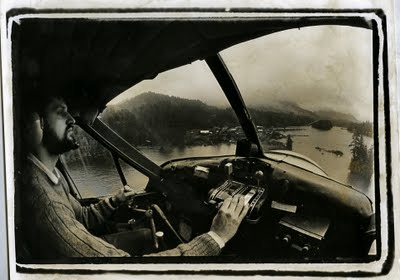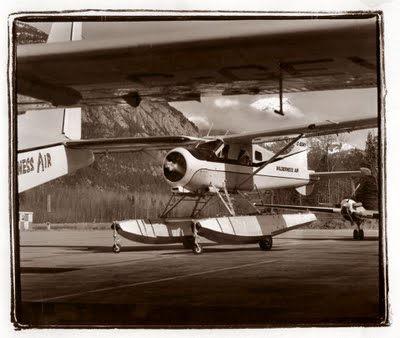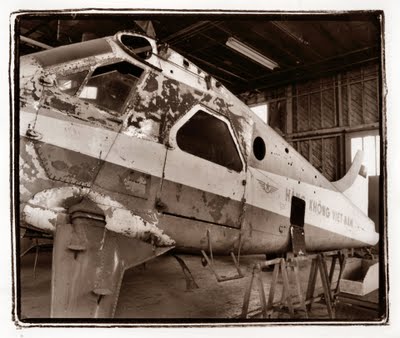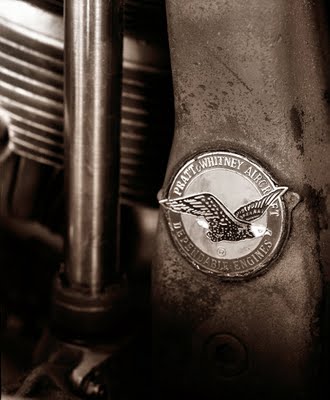
No matter how much metalworking finesse goes into the construction of a prototype airplane, there is a roughness around the edges, a dimpled aluminum skin and a general lack of finish that is the mark of a hand built machine. Details come later. The esthetics can wait. No need for a racy paint job. Let’s see if this thing will fly.
Still the de Havilland Canada DHC-2 Beaver prototype that Wing Commander Russ Bannock climbed into shortly before 10 A.M. on August 16, 1947, was a handsome airplane in its own way: a sturdy-looking, squared-off, pug nosed fuselage, fronted with a big, flat, no-nonsense radial engine with its bulk set on thick landing-gear struts that gave it the look of a heads-up bulldog ready to leap off the ground.
The Immortal Beaver – The World’s Greatest Bush Plane by Sean Rossiter, 1996, Douglas & McIntyre

This blog has been in my mind for the last week but it finally put itself in front of me when Rebecca on Saturday said that there was a very big squirrel in the garden that just might be eating Rosemary’s bulbs. Just to be cute I told Rebecca that it was not a squirrel but our resident beaver and that it had good teeth. In the presence of her mother Rebecca (12) alluded to other qualities of beavers and I kept my mouth shut being happy that at long last Rebecca has moved on from innuendo jokes on flatulence.

Today Sunday (I am writing Monday’s blog today) I was enjoying my New York Times in bed (on paper, not on a computer monitor screen). I heard a noise and matter-of-factly I told Rosemary, “That’s a de Havilland Beaver.”
With a modified (restricted) air space over Vancouver since a bit before the Olympics began the sounds over our house (we are at 41st and Granville and thus not far from the Vancouver Airport) have radically changed. We no longer hear as many commercial jets. There are three distinct airplane sounds over our house which must be some special corridor. One is the almost unceasing sound of helicopters that must be ferrying officials, politicians, athletes and Olympic guests from the airport or from Richmond Olympic facilities.

Helicopters of the blacker kind made my Strathcona- resident friend Mark Budgen, finally move to Oliver, B.C. for the duration of the games. It seems that these big black helicopters would fly back and forth early mornings over his house and rattle his dishes. The same noises have driven my friend Ian Bateson batty. His design firm Baseline is in the Vancouver Block on Granville and Georgia. Oliver does not beckon as he has to make ends meet and continue his work.
I seem to have better luck. While the helicopters are a pain the sounds of the other two types of aircraft are much to my liking. A pair of F-18s keeps booming around in the mornings and then there is that Beaver. It could be one or many. But I have taken possession of them, and converted them to my one Olympic Beaver.
It occurred to me this morning that Sean Rossiter’s comparison of the Beaver to “a heads-up bulldog ready to leap off the ground” is open to my own re-interpretation.

Casa (short for Casanova) has been at home now for a week. He is Rosemary’s 17 pound cat. Casa (he is as sturdy looking as a de Havilland Beaver) has quickly ingratiated himself with his owner and has quietly finessed himself into an appreciation by my snobbish, female cat Plata. They now sleep at the foot of our bed (on an Eaton’s blue blanket) a mere inches apart. When I go up the stairs to our bedroom to check on Rosemary’s progress with her Word and Powerpoint classes (she works in bed with her laptop) I find the big presence of Casa on the bed a comforting one. The world is just fine if Casa is there and that Beaver flies over my house with an equanimity that comes from having done it since that prototype first flew in 1947. When the Olympics are gone I will miss my Olympic Beaver but I know it (he?) will be flying elsewhere with regularity and dependability. Some things don’t change. Thank God.
Some may wonder about the sounds of airplanes to a discerning ear. Most will readily admit that for better or for worse Harley Davidsons sound different to most other motorcycles. The same difference applies to Beavers. There is a primitive put-putness to the Harley sound that is paralleled by the Beaver. The Harley sounds as if is not tuned. My friend Sean Rossiter (not an expert on motorcycles but indeed on airplanes) explained today Sunday that Harleys have symmetrically oposed cylinders, two of them, and that there is no way to make such an engine purr like Rosemary's Casa. He further explained that the Pratt & Whitney radial engine of a de Havilland Beaver is air cooled. He told me that water cooled airplane engines bring with the cooling an inherent noise supression that is absent with the air cooled radial engine. It is the Beaver's sound that for me is a trademark to its very dependability. It is a handsome low frequency sound that does not beat around the bush. Rossiter told me that our beloved Grumman A-6s were very loud because the engines were turbo jets. It seems that the transition to the more quiet turbofan engines passed me by. "F-18s make a lot noise even though they are turbofans because the pilots are making the noise on purpose to make their presence over our Vancouver skies clearly evident." "Do they make more noise when they switch on the afterburners?" I asked him. "Yes." Some years ago when Rebecca was around 7 I took her to an Abbotsford Air Show. "What is your favourite airplane here?" I asked her. "The F-14 Tomcat, " she replied. I asked her why. "Because it is loud." That my Rebecca chose the very plane that somehow has carried the mantle of that other great Grumman plane the A-6 (the Tomcat is also manufactured by Grumman) made me instantly appreciate her more.
We will have to book a flight in a Beaver, soon.